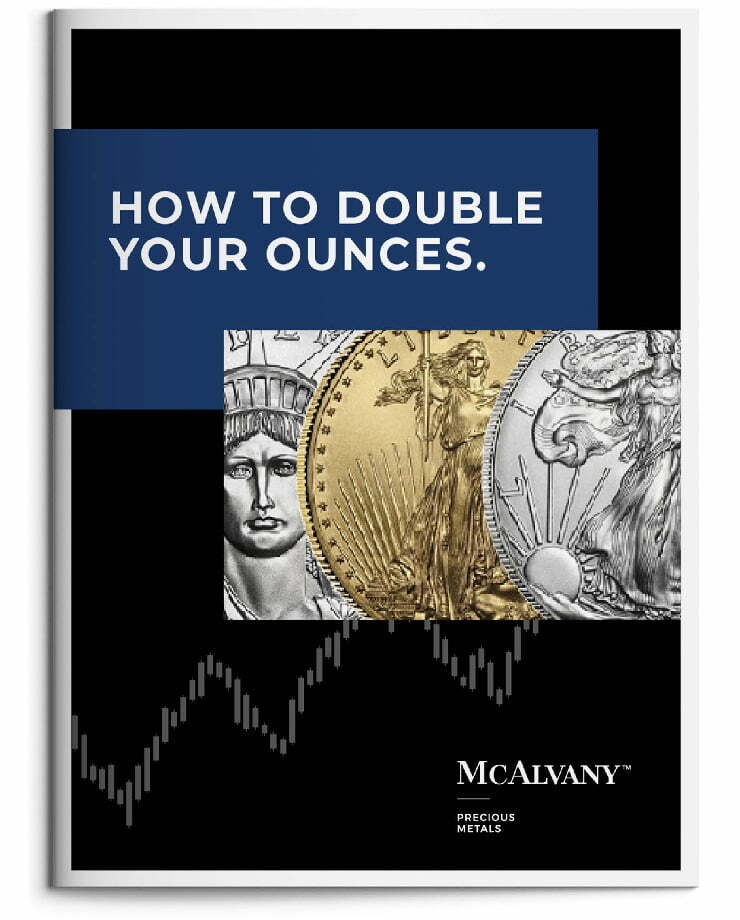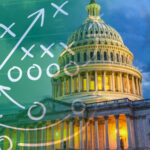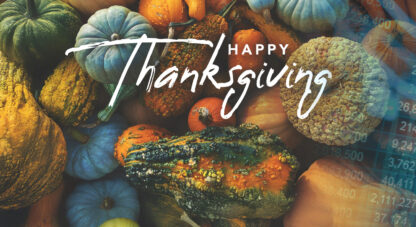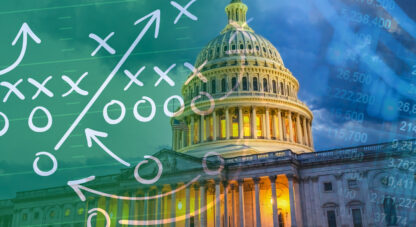Clarity In the Fog of War
According to the latest UMich consumer sentiment data, fear is now very real among Americans. U.S. consumer sentiment has fallen to one of the lowest readings on record, and long-term inflation expectations have surged to the highest level since 1991. At the same time, year-ahead inflation expectations are the highest since 1981 on worries over the domestic consequences of tariffs and Trump’s trade war more broadly.
In the words of UMich Surveys of Consumers Director Joanne Hsu on Friday:
“Consumer sentiment fell for the fourth straight month, plunging 8% from March. While the April decline in current conditions was modest, the expectations index plummeted, with drop-offs in personal finances as well as business conditions. Expectations have fallen a precipitous 32% since January, the steepest three-month percentage decline seen since the 1990 recession.
While this month’s deterioration was particularly strong for middle-income families, expectations worsened for vast swaths of the population across age, education, income, and political affiliation. Consumers perceived risks to multiple aspects of the economy, in large part due to ongoing uncertainty around trade policy and the potential for a resurgence of inflation looming ahead. Labor market expectations remained bleak. Even more concerning for the path of the economy, consumers anticipated weaker income growth for themselves in the year ahead. Without reliably strong incomes, spending is unlikely to remain strong amid the numerous warning signs perceived by consumers.”
Hsu continued, “Year-ahead inflation expectations surged from 5.0% last month to 6.5% this month, the highest reading since 1981 and marking four consecutive months of unusually large increases of 0.5 percentage points or more. This month’s rise was seen across all three political affiliations.”
Some people downplay consumer sentiment data in a particularly uncertain and highly partisan political climate. Still, HAI submits that such extreme pessimism over both the economy and future inflation is now crossing thresholds that run the risk of being self-fulfilling.
As FDR famously said, “the only thing we have to fear is fear itself.” At present, it appears high time to acknowledge the presence of fear itself. When consumers fear the future, they close the purse strings on a 70% consumer spending-driven economy. When corporations fear the future, they slash cap-ex spending and protect cash by sitting on their hands. This week, HAI saw some initial signs of fear emerging in both consumer and corporate data.
On Thursday, Bank of America’s real-time weekly spending update flashed a warning for airlines and travel more broadly. In the seven days ended April 19th, year-over-year airline spending was down a dramatic 13.4%. Corroborating the data, Delta and American Airlines just announced that they’re both withdrawing full-year guidance. In the case of American Airlines, the company said it sees “significant” main cabin weakness into summer. Southwest Airlines CEO Bob Jordan seems to be feeling the fear as well. On Thursday, Jordan said that, putting the Covid lockdowns aside, he’s never witnessed such a precipitous decline in leisure travel. As he put it, “I don’t care if you call it a recession or not, in this industry, that’s a recession.”
Then there was the latest Kansas City Federal Reserve manufacturing survey. In April, the Tenth District’s Future Cap-ex index fell to a net -10, breaking an 18-quarter string of expansion. The plunge at the second quarter’s outset was so dramatic that the only relevant comparisons for the current index weakness are the 2001 recession and the Great Financial Crisis period.
This week also delivered a worrisome update from the Federal Reserve Districts of Philadelphia, Richmond, and Chicago.
In Philly, the non-manufacturing regional activity index fell 10 points to -42.7, the lowest since May 2020, while the six-month outlook for General Business Conditions plunged to -23.0 in April, a reading 4.1 points shy of April 2020’s pandemic lockdown record low. Even worse, the Current Prices Paid gauge rose to a two-year high of 46.5, reinforcing the emerging economic stagflation narrative.
Meanwhile, further south, the Richmond Fed services future employment index has collapsed. In December, this gauge was at a two-year high of +30. As of April, however, the index has dropped 29 points to just +1.0. Furthermore, both the Richmond Future Cap-ex indices for manufacturing (-15) and services (-6) have now sunk into full-on deterioration mode.
The grim outlooks from both the Philly and Richmond banks were also reinforced in Chicago. At -21.4, the Chicago Fed Survey of Economic Conditions (CFSEC) showed current activity across both manufacturing and non-manufacturing moving significantly below trend thus far in the second quarter. The CFSEC 12-month outlook for the broad U.S. economy was even worse, plunging to a stunning -50.0. Taken together, the regional Fed survey data increases the odds that U.S. growth has materially weakened over recent months, and that’s even before the actual tariff shock has even hit.
For a preview of what that tariff shock could look like, Ryan Petersen, founder and CEO of logistics firm Flexport, said this week that, “in the three weeks since the tariffs took effect, ocean container bookings from China to the United States are down over 60% industry-wide.” Petersen continued, “if the tariffs on China continue at this level we will see a $2 trillion hit to economic activity in our country, the failure of tens of thousands of American businesses, and the laying off of millions of employees.”
Then, in what was the defining market event of the week, as if in direct response to a growing awareness of the incoming tariff-related hit to the U.S. economy, Treasury Secretary Scott Bessent eased market concerns by stating that the trade war with China is not “sustainable” and that he expects the tariff standoff with China to “de-escalate.”
Later on Tuesday, President Trump himself further assured markets that “tariffs on China won’t be as high as 145%,” and that they’ll “come down substantially but won’t be zero.”
All told, Tuesday’s verbal de-escalation from both Bessent and Trump amounted to a shot in the arm that a pending relief rally on Wall Street had been desperately waiting for. In no time, the “Sell America and buy gold” trade flipped dramatically into a “scramble to buy everything America and sell gold” bonanza. Stocks, bonds, and the U.S. dollar all bounced, while gold finally succumbed to some long-overdue selling pressure.
Now, while HAI understands the western investor’s trading mentality to sell gold on any hopes of an imminent trade deal, this author would strongly temper that impulse. Despite the knee-jerk reaction this week to sell gold and buy stocks in response to a perceived thawing of global trade tensions, in HAI‘s view, any meaningful correction in the gold price should be bought aggressively.
HAI remains convinced that the second derivative impact of any deal to rebalance trade is ultimately the greater use of gold as a neutral reserve asset, and a resulting secular move much higher in the gold price.
Conversely, if there is no deal, HAI still expects gold to reemerge as the preferred global neutral reserve asset and for prices to surge as the Fed is forced into a dramatic policy easing in an attempt to counteract an economic shock.
In HAI‘s view, the most underappreciated aspect of the bullish gold thesis continues to be gold’s win-win positioning. By the time Western consensus figures that out, HAI expects the gold price to be far higher than this week’s brief tag of $3,500 per ounce.
Increasingly, HAI is not alone on that view. On Friday, that buy-the-dip sentiment on any gold correction was enthusiastically echoed by David Schassler, head of multi-asset solutions at Van Eck. According to Schassler and his team at Van Eck, every 20 basis-point shift in global investment allocations away from stocks and bonds and into gold translates to a doubling of the gold price. Importantly, Schassler said “we see that happening” and expect $4,000/oz gold this year and a $5,000/oz gold price in 2026. As Schassler put it, those price calls are “on the board and totally reasonable.” HAI couldn’t agree more.
On the international trade front, the fog of war is thick at present. In contrast, for those seeing gold’s win-win positioning within the developing macro landscape, gold’s bright future is crystal clear.
Weekly performance: The S&P 500 was up 4.59%. Gold was off 0.19%, silver was higher by 1.71%, platinum was up 0.34%, and palladium was lower by 2.43%. The HUI gold miners index lost 2.62%. The IFRA iShares US Infrastructure ETF was up 1.95%. Energy commodities were volatile and lower on the week. WTI crude oil was down 2.33%, while natural gas was off 8.62%. The CRB Commodity Index was up 0.70%. Copper was up 3.07%. The Dow Jones US Specialty Real Estate Investment Trust Index was off 0.43%. The Vanguard Utilities ETF was up 0.34%. The dollar index was up 0.10% to close the week at 99.47. The yield on the 10-yr U.S. Treasury was down 9 bps to close at 4.24%.
Have a wonderful weekend!
Best Regards,
Morgan Lewis
Investment Strategist & Co-Portfolio Manager
MWM LLC















